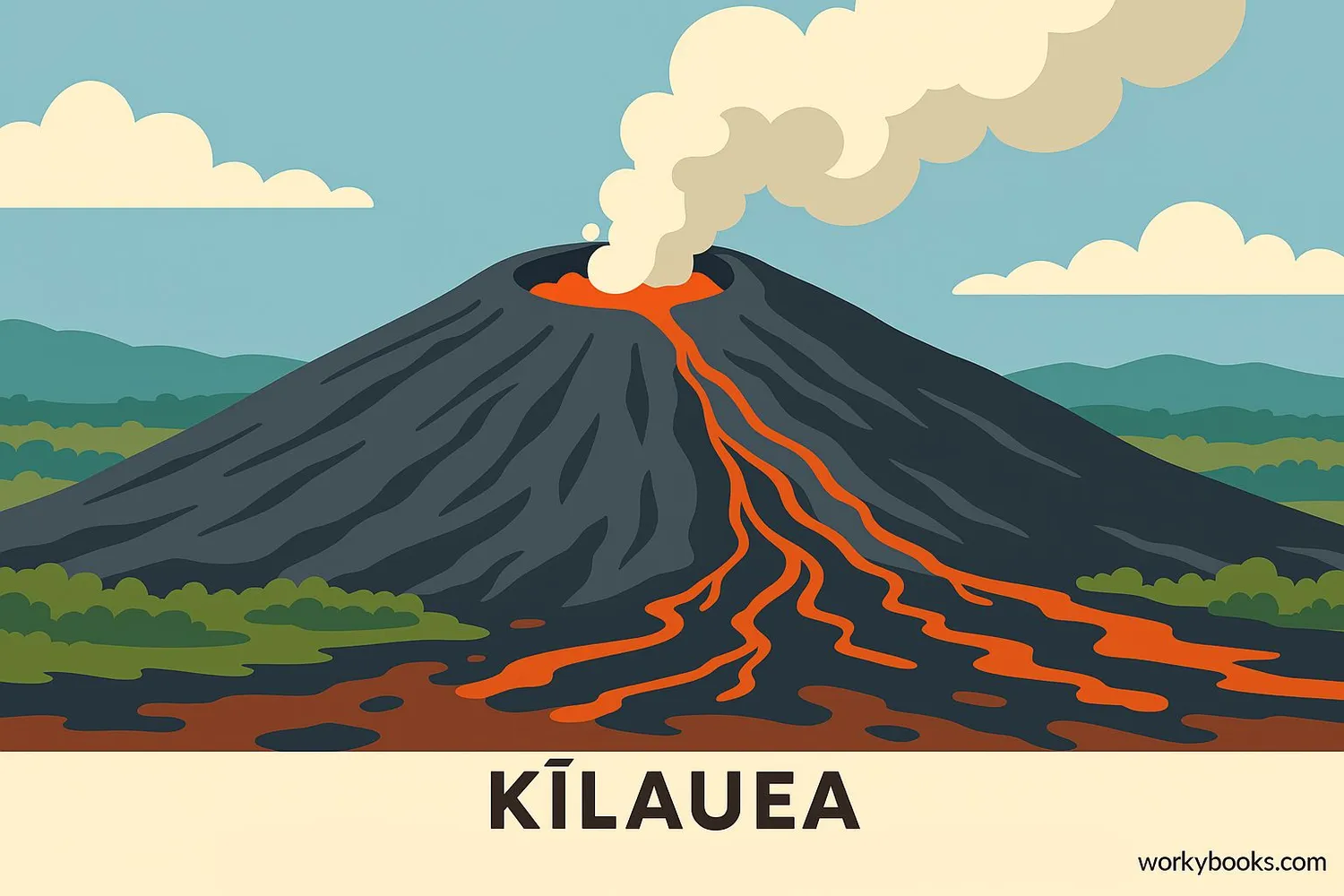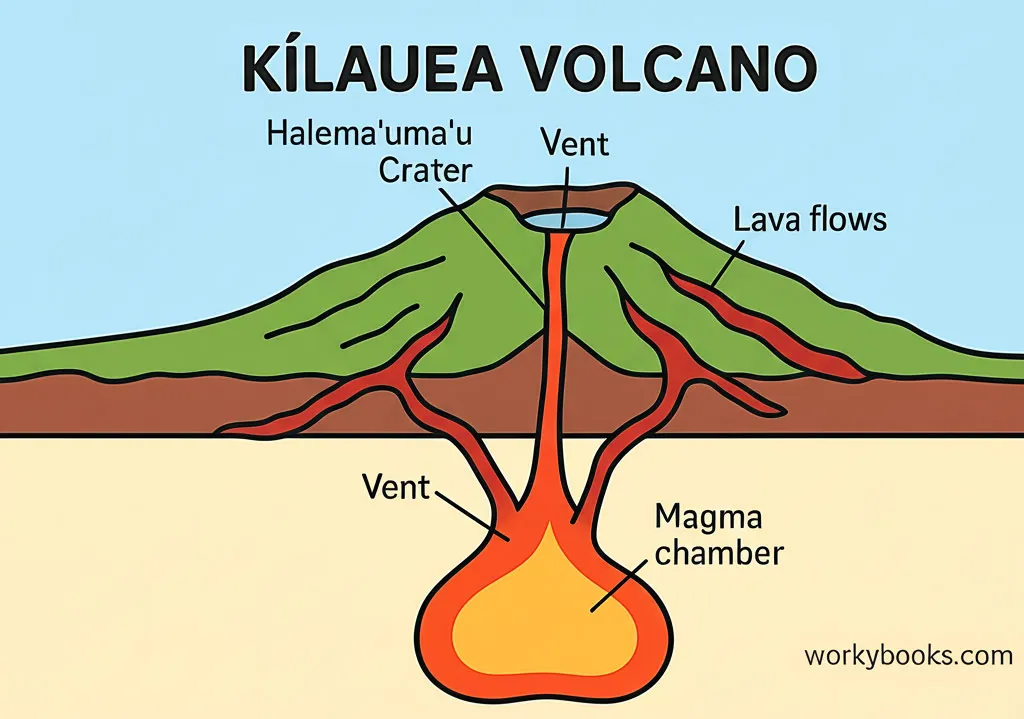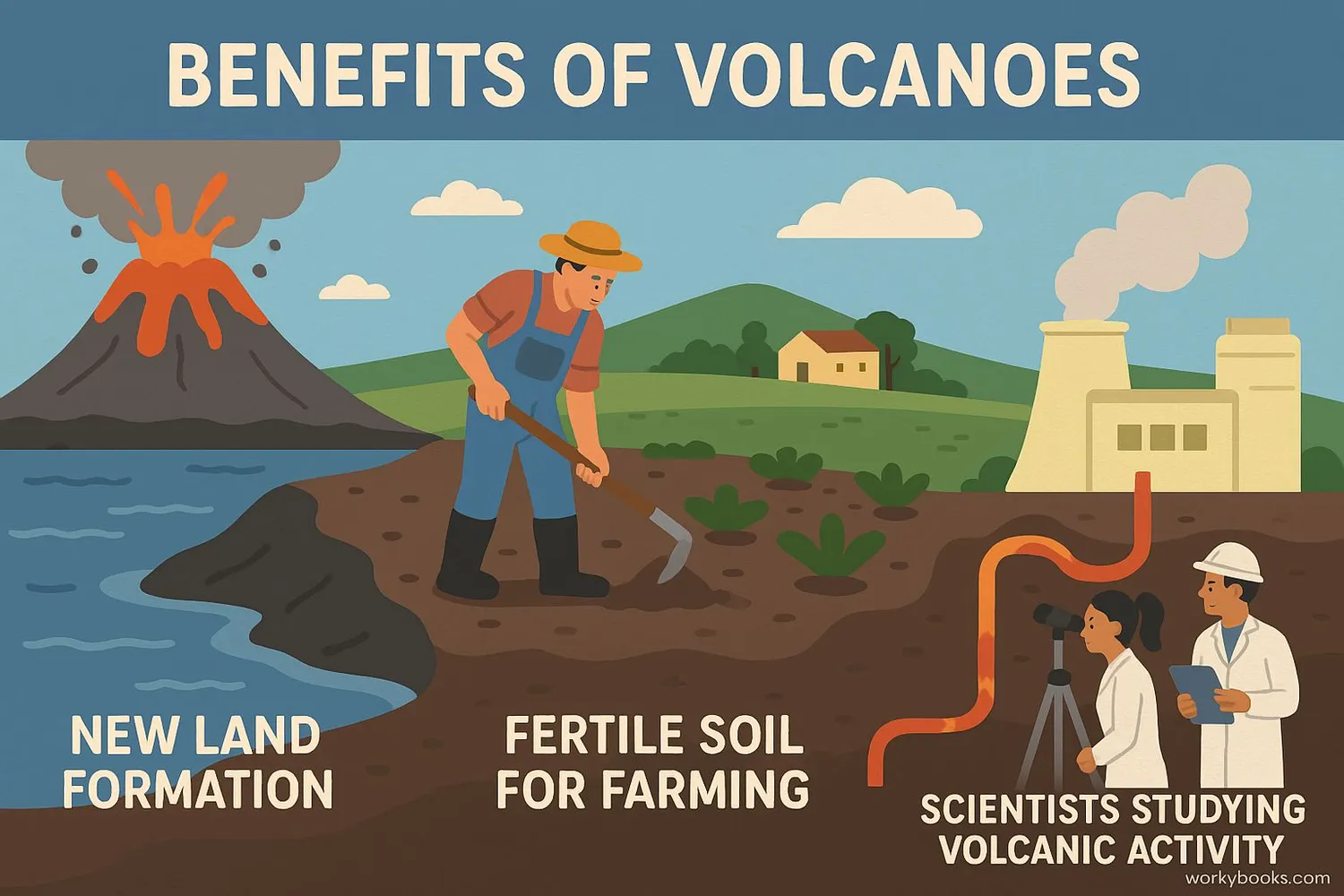Kilauea Volcano - Definition, Examples, Quiz, FAQ, Trivia
Explore one of Earth's most active volcanoes located in Hawaii
What is Kilauea Volcano?

Kilauea is one of the world's most active volcanoes located on the Big Island of Hawaii. It's a shield volcano, which means it has gently sloping sides formed by flowing lava. Kilauea is part of the Hawaiian hotspot, a place where magma from deep within Earth rises to the surface.
The name Kilauea means "spewing" or "much spreading" in Hawaiian, referring to its frequent lava flows. It's located within Hawaii Volcanoes National Park and has been erupting almost continuously since 1983. Kilauea has a large summit caldera called Kaluapele with a crater called Halemaʻumaʻu where volcanic activity often occurs.
Volcano Fact!
Kilauea is one of five volcanoes that form the Big Island of Hawaii. The others are Kohala, Mauna Kea, Hualālai, and Mauna Loa.
How Kilauea Erupts

Kilauea's eruptions are typically effusive rather than explosive, meaning lava flows steadily rather than exploding violently. Here's how the eruption process works:
Magma Rises
Hot magma from Earth's mantle rises through cracks in the crust
Reaches Surface
Magma reaches the surface through vents or fissures
Lava Flows
Lava flows downhill, sometimes reaching the ocean
Forms New Land
As lava cools, it creates new land formations
Gases Released
Volcanic gases like vog (volcanic smog) are released
Kilauea's lava is basaltic, which means it has low viscosity (it flows easily). This creates spectacular lava rivers and lava lakes. During eruptions, you might see:
• Pāhoehoe lava: Smooth, rope-like lava flows
• ʻAʻā lava: Rough, jagged lava flows
• Lava fountains: Jets of molten rock shooting into the air
• Pele's hair: Thin strands of volcanic glass
Eruption Fact!
The 2018 Kilauea eruption was one of its most significant in modern times, creating over 875 acres of new land and destroying over 700 homes.
Why Kilauea is Important

While volcanic eruptions can be destructive, they also play important roles in our world:
New Land Creation
Kilauea's eruptions have added over 500 acres of new land to Hawaii
Fertile Soil
Volcanic ash creates nutrient-rich soil for agriculture
Scientific Research
Scientists study Kilauea to understand Earth's geological processes
Kilauea also teaches us about:
• How islands form over volcanic hotspots
• How to monitor and predict volcanic activity
• How communities can prepare for natural hazards
• The creation of unique ecosystems on new land
Hawaii Volcanoes National Park protects Kilauea and Mauna Loa, allowing visitors to safely experience these powerful natural wonders.
Volcano Quiz
Test your volcano knowledge with this quiz! Answer all 5 questions to see how much you've learned about Kilauea.
Frequently Asked Questions
Here are answers to some common questions about Kilauea volcano:
Volcano Trivia
Discover some amazing facts about Kilauea and volcanoes!
Not the Tallest
While impressive, Kilauea is actually the smallest of Hawaii's five volcanoes, rising just 1,247 meters (4,091 feet) above sea level. Its neighbor Mauna Loa is much larger!
Lava Flows Far
During the 2018 eruption, Kilauea's lava traveled over 12 miles from the eruption site to the ocean, creating new land as it entered the water.
Pele's Home
In Hawaiian mythology, Kilauea's Halemaʻumaʻu crater is the home of Pele, the volcano goddess. Hawaiians have respected and honored Pele for centuries.
Young Volcano
Kilauea is between 300,000 and 600,000 years old - very young for a volcano! It emerged above sea level about 100,000 years ago.


